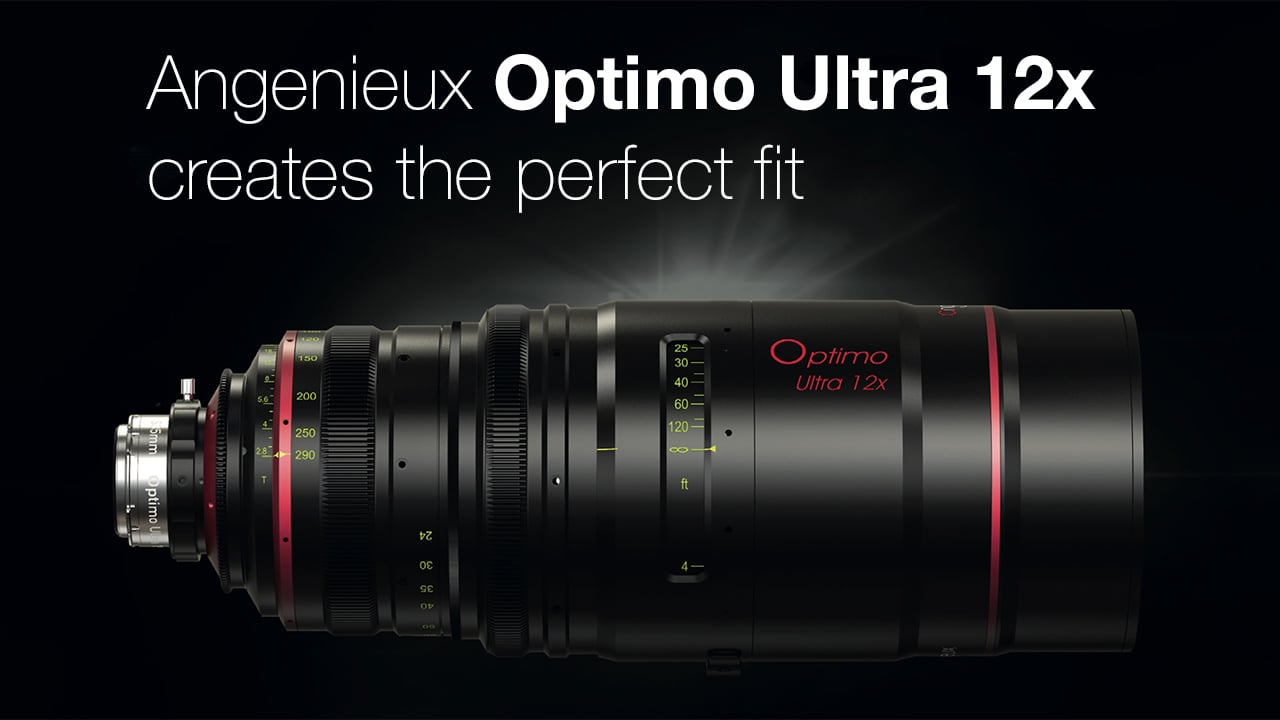
With the sheer number of lens interfaces that exist today, we are used to adapting lenses to our cameras using adaptors. Now Angenieux has turned this thinking on its head by allowing us to adapt the lens to both the camera and sensor size at will. Freya Black investigates.
Modular design seems to be something that is very much on the upswing. Red have clearly had modular camera designs at the centre of its thinking for some time and the use of DSLRs has driven people to create rigs based around re-usable parts as well in order to make cameras designed for stills work better in a cinema context.
Now cameras like the new Sony Venice are trying to take this thinking even further with such features as exchangeable sensor blocks joining the more usual options for power, recorders, monitors, viewfinders and supports.
There is clearly a demand for cameras to be more reconfigurable for different situations, and now this way of working and thinking has found its way to cinema zoom lenses too. A new zoom lens that was shown at IBC 2017 for the first time, the Angenieux Optimo Ultra 12x, allows people to re-use the exact same zoom lens in different contexts, and it might be the perfect compliment to the new Sony Venice camera.
Trend for large sensors
There is a trend at the moment for larger sensors, and the new zoom lens can be reconfigured to be optimal for full frame blocks like that in the Sony Venice, in addition to having the ability to be configured to be optimal for the more common Super 35mm sized sensors that fit more closely to the traditions of cinema.
The lens builds on the heritage of the Optimo 24-290 zoom, which has been a common lens used on many major motion picture productions since it was released back in 2001. The new Optimo Ultra features Angenieux IRO (Interchangeable Rear Optics) technology which allows you to swap out the rear optics for different sensor sizes. It can be configured for three different formats, Super35, U35 and Full Frame. The Interchangeable Optical sets come with dedicated focus, iris and zoom barrels which are calibrated for each specific lens.
In order not to get the parts confused across different lens setups, there are serial numbers on all the individual components. This way if a rental house has more than one of the zooms they won't be able to confuse the components from the different zooms with one another. There are even changeable focus barrels with focus scales available in Imperial or Metric scaling. It also features exchangeable rear lens mounts, but at present only the standard PL mount is available. But you can expect that there will at least be a Canon EF mount for the lens in the future.
Configurations
In its basic form the Ultra 12x supports S35 with an image circle of 31.1mm and a maximum aperture of T2.1. But it comes as default with a rear optical setup too, and that expands the support to U35 for applications such as Alexa Open Gate or anything else that will fit into the expanded 34.6mm image circle that the U35 rear optics give you. This U35 configuration should work well with cameras based around the 8K Red Helium sensor or Red Dragon 6K cameras. When it is reconfigured for this format the zoom range is 26-320mm at a maximum aperture of T3.1.
You can buy an additional rear optical set that allows you to use the lens with full frame sensors such as those in Sony's new high end Venice camera and RED 8K Vista Vision sized sensors. The Alexa 65 has an even larger sensor than this setup supports, but you could use it with that camera in its full frame sensor crop mode. The full frame configuration gives you a 46.3mm image circle and the zoom range becomes 36-435mm with an aperture of T4.2.
Angenieux is claiming that the lens is capable of a resolution of up to 200 LPM. Apparently 40 LPM equals 4K and 80 LPM equals 8K, so presumably 200 LPM should be good for up to 20K sensors, although this is the maximum resolution that the lens is able to resolve. In any case the lens should be more than capable of delivering the goods with the camera technology of today and will probably be useful for some considerable time in the future, too.
Angenieux claims that the zoom has no ramping and minimal breathing. The minimum object distance has been optimised for close focusing, and colour fringing has been minimised through efficient use of aspherical lens elements.
There is also a specially designed carry handle and a front protective glass filter available as extras to help you use the lens in the field. The existing 1.4x and 2x Optimo Extenders are compatible with the basic Super 35mm configuration of the new lens, but not with the additional U35 and full frame components.
The Standard Optimo Ultra 12x package will be available in January 2018. This comes with the basic Super 35mm Zoom lens and the additional U35 Kit as standard. It will cost $73,000. The kit to support Full Frame sensors will cost $10,000 and will be available from August 2018.